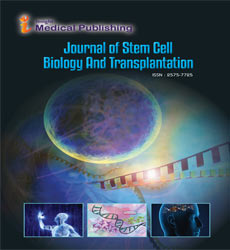Tissue culture is the growth of tissues or
cells in an artificial
medium separate from the parent organism. This technique is
also called micropropagation. This is typically facilitated via use
of a liquid semi-solid or solid growth medium, such as broth or
agar. In 1885 Wilhelm Roux removed a section of the medullary
plate of an embryonic chicken and maintained it in a warm
saline solution for several days, establishing the basic principle
of tissue culture. In 1907 the zoologist Ross Granville Harrison
demonstrated the growth of frog embryonic
cells that would
give rise to nerve
cells in a medium of clotted lymph. In 1913
Steinhardt C. Israeli, grew vaccinia virus in fragments of guinea
pig corneal tissue. In 1996, the first use of regenerative tissue
was used to replace a small length of urethra, which led to the
understanding that the technique of obtaining samples of tissue
growing it outside the body without a scaffold, and reapplying it,
can be used for only small distances of less than 1 cm. Gottlieb
Haberlandt first pointed out the possibilities of the culture of
isolated tissues, plant tissue culture. He suggested that the
potentialities of individual
cells tissue culture as well as that the
reciprocal influences of tissues on one another could be
determined by this method. Since Haberlandt's original
assertions, methods for tissue and cell culture have been
realized, leading to significant discoveries in biology and
medicine. His original idea, presented in 1902, was called
totipotentiality: â??Theoretically all plant
cells are able to give rise
to a complete plant.â?
Modern Usage
In modern usage, "tissue culture" generally refers to the
growth of
cells from a tissue from a multicellular organism in
vitro. These
cells may be
cells isolated from a donor organism
(primary cells) or an immortalised cell line. The
cells are bathed
in a culture medium, which contains essential nutrients and
energy sources necessary for the cells' survival. Thus, in its
broader sense, "tissue culture" is often used interchangeably
with "cell culture". On the other hand, the strict meaning of
"tissue culture" refers to the culturing of tissue pieces, i.e.
explant culture. Tissue culture is an important tool for the study
of the biology of
cells from multicellular organisms. It provides
an in vitro
model of the tissue in a well-defined environment
which can be easily manipulated and analysed. In animal tissue
culture,
cells may be grown as two-dimensional monolayers
(conventional culture) or within fibrous scaffolds or gels to attain
more naturalistic three-dimensional tissue-like structures (3D
culture). Eric in a 1988 NIH SBIR grant report showed that
electrospinning could be used to produce nano- and submicronscale polymeric fibrous scaffolds specifically intended for use as
in vitro cell and tissue substrates. This early use of electrospun
fibrous lattices for cell culture and tissue engineering showed
that various cell types would adhere to and proliferate upon
polycarbonate fibers. It was noted that as opposed to the
flattened morphology typically seen in 2D culture,
cells grown
on the electrospun fibers exhibited a more rounded 3-
dimensional morphology generally observed of tissues in vivo.
Plant tissue culture in particular is concerned with the
growing of entire plants from small pieces of plant tissue,
cultured in medium. Plant tissue culture is a collection of
techniques used to maintain or grow plant cells, tissues or
organs under sterile conditions on a nutrient culture medium of
known composition. It is widely used to produce clones of a
plant in a method known as micropropagation. Different
techniques in plant tissue culture may offer certain advantages
over traditional methods of propagation.
Plant tissue culture relies on the fact that many plant cells
have the ability to regenerate a whole plant (Cellular
totipotency). Single cells, plant
cells without cell walls
(protoplasts), pieces of leaves, stems or roots can often be used
to generate a new plant on culture media given the required
nutrients and plant hormones.
Tissue culture is the growth of tissues or cells in an artificial medium separate from the parent organism. This technique is also called micropropagation. This is typically facilitated via use of a liquid, semi-solid, or solid growth medium, such as broth or agar. In 1885 Wilhelm Roux removed a section of the medullary plate of an embryonic chicken and maintained it in a warm saline solution for several days, establishing the basic principle of tissue culture. In 1907 the zoologist Ross Granville Harrison demonstrated the growth of frog embryonic cells that would give rise to nerve cells in a medium of clotted lymph. In 1913, E. Steinhardt, C. Israeli, and R. A. Lambert grew vaccinia virus in fragments of guinea pig corneal tissue. In 1996, the first use of regenerative tissue was used to replace a small length of urethra, which led to the understanding that the technique of obtaining samples of tissue, growing it outside the body without a scaffold, and reapplying it, can be used for only small distances of less than 1 cm. Gottlieb Haberlandt first pointed out the possibilities of the culture of isolated tissues, plant tissue culture. He suggested that the potentialities of individual cells via tissue culture as well as that the reciprocal influences of tissues on one another could be determined by this method. Since Haberlandt's original assertions, methods for tissue and cell culture have been realized, leading to significant discoveries in biology and medicine. His original idea, presented in 1902, was called totipotentiality: “Theoretically all plant cells are able to give rise to a complete plant.”
